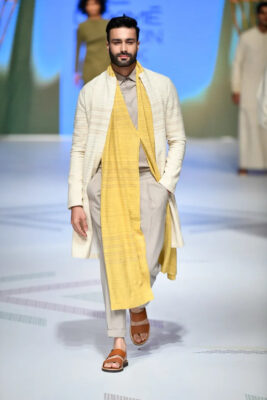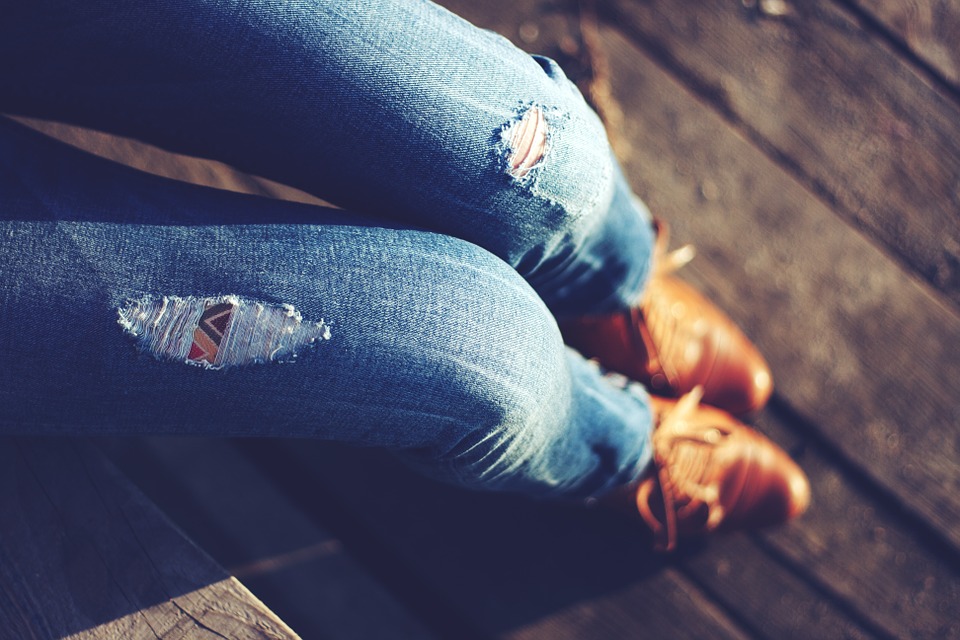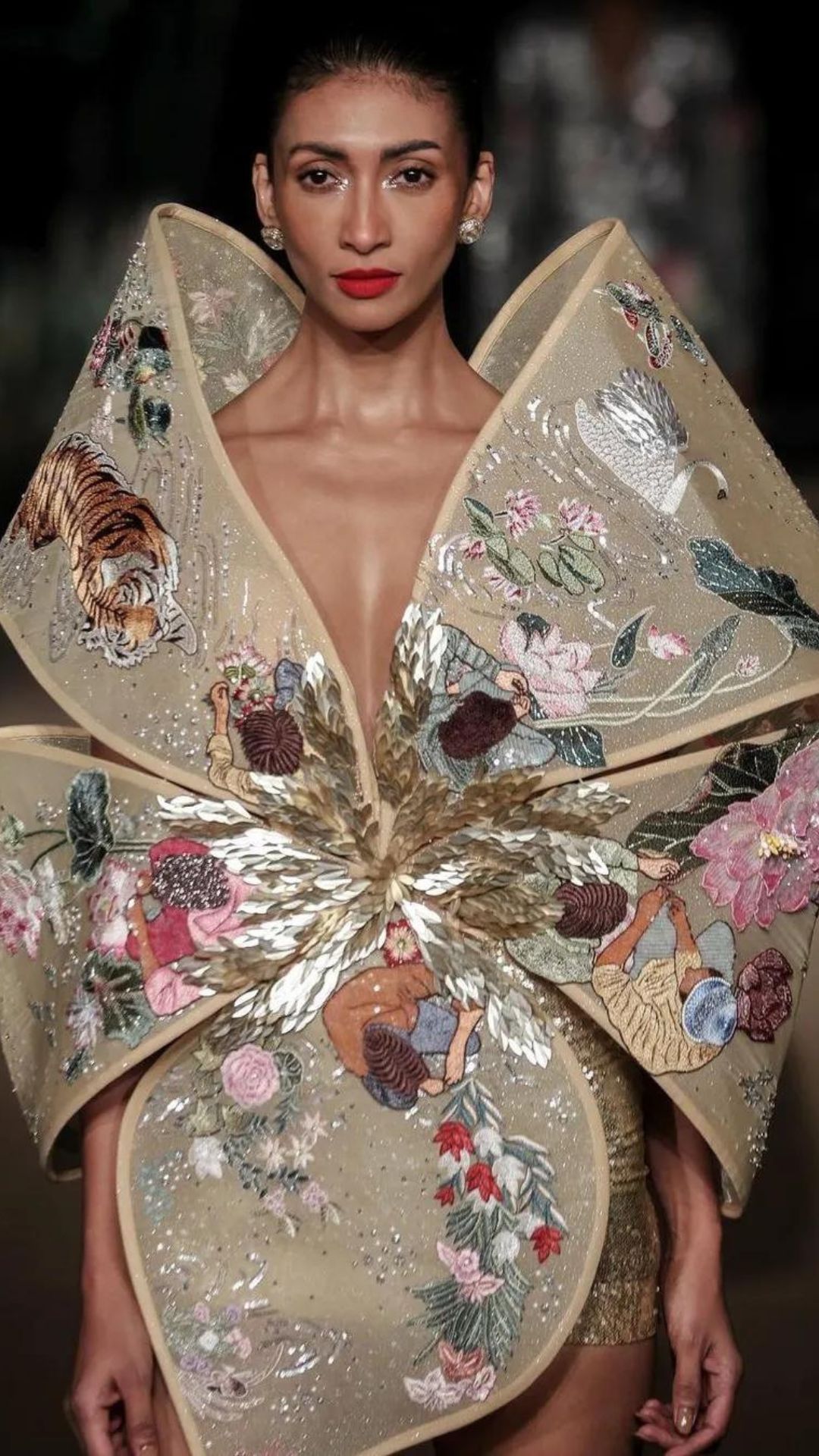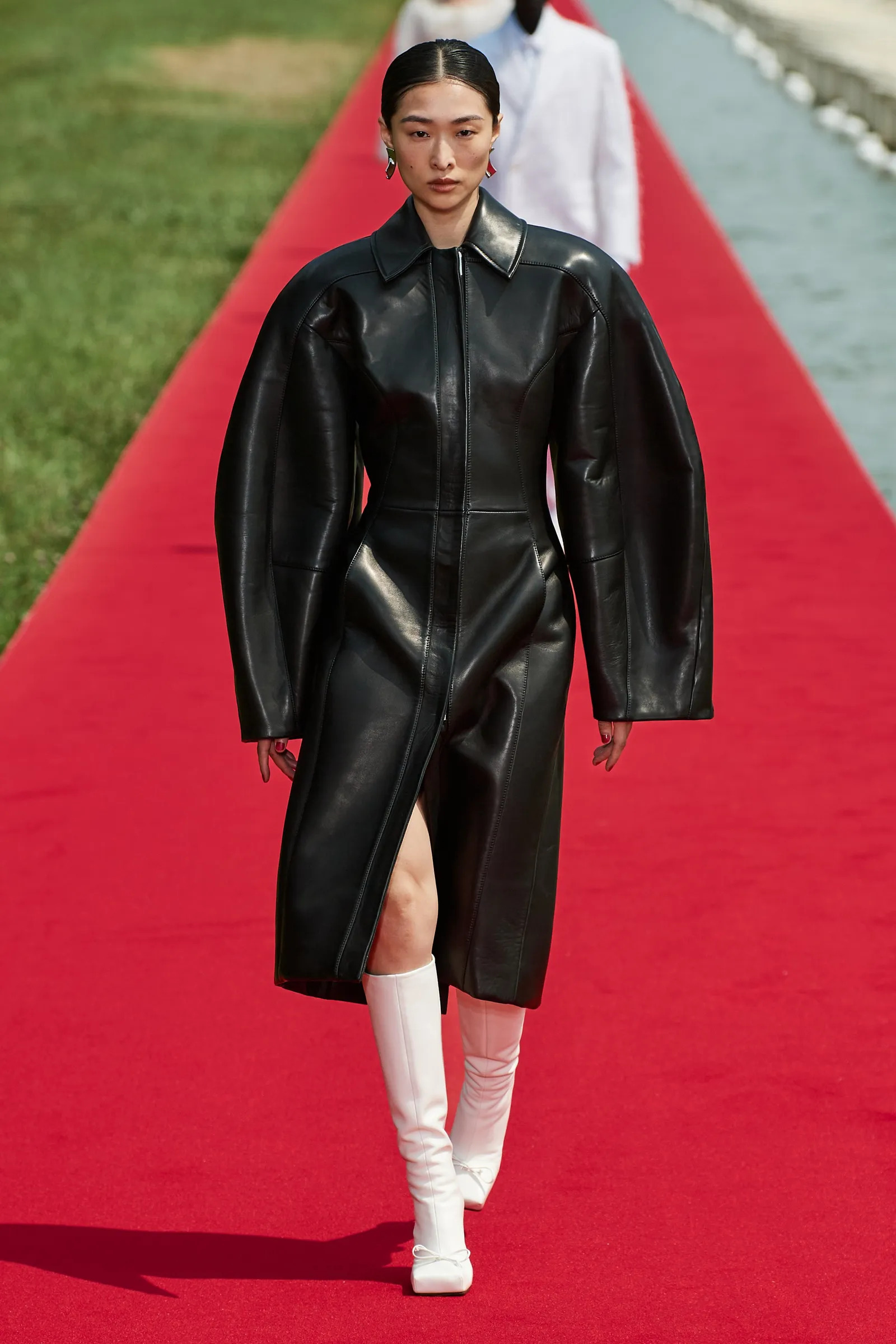
Khadi represents the skilled craftsmanship of artisans who have preserved age-old techniques. This emphasis on artisanal workmanship appeals to those seeking unique, high-quality fashion pieces in a world dominated by mass-produced goods.
When the cliché uniform of grave lawmakers and an image of confidence in India’s freedom battle, khadi is currently the dear material of India’s style houses, and is much of the time spotted at spring up shops, workmanship biennales, and on wanderers the nation over. Cognizant design purchasers have rushed to take on khadi denim pants, and current ladies are making in wanton khadi lehengas in their linen. While the texture is frequently connected with the coarse cotton used to make customary kurtas, khadi can really allude to any normal texture (cotton or silk) that has been handspun and handwoven. The name khadi comes from the word ‘khaddar’ (meaning handspun in the subcontinent), and is an illustration of India’s old hand tailored material customs that return to 400BC as per Greek history specialist, Herodotus. By the late seventeenth 100 years, Indian textures were better than the point that they overwhelmed European business sectors, and were in the long run restricted by the French and English to diminish contest for their own machine-made material. It was Gandhi who got back pride Indian materials by requesting that his compatriots boycott English materials and on second thought wear khadi to help India’s provincial economy — his emblematic charkha is even important for our public banner plan.
Post-autonomy, The Khadi and Town Businesses Commission (KVIC) was shaped to create and energize the development of the texture in the country. Today, enormous scope attire makers are teaming up with the KVIC to involve khadi in new assortments and product offerings. The Aditya Birla bunch sent off ‘Khadi by Peter Britain’ for its menswear image in late 2017, while Raymond worked with 100 khadi groups at the grassroots level to send off an extravagance assortment called ‘Khadi, the Story Re-Turned’ in its Indian and global stores a year ago.

At Lakmé Design Week summer/resort 2019, Raymond x Antar-Agni and Place of Anita Dongre both held hands with UNDP in India and IMG Dependence for ‘Winding around Organizations for Change’, each displaying an assortment with handwoven pieces of clothing made by ladies weavers in Assam. Arvind Restricted has swore to get 1,000,000 meters of the texture consistently to create an imaginative khadi offering. “Our khadi denim was created at KVIC-approved Khadi winding around focuses in South Gujarat,” says Aamir Akhtar, Chief, Way of life Textures – Denim, Arvind Restricted. “It’s essential to help India’s khadi bunches on the grounds that the total job of individuals in specific spots spins around khadi. Turning khadi yarn and winding around khadi texture is a family and public movement in those districts. Khadi denim is potentially the world’s most feasible denim, on the grounds that each interaction is finished manually — accordingly the carbon impression is immaterial.”
Among the creators, Anavila Misra has been involving khadi starting from the commencement of her eponymous image in 2011. She adores the fall and believe and of both cotton and silk khadi, and utilizations the textures to make agreeable sari shirts, saris, tunics, pullovers and pants. “On the off chance that we don’t utilize khadi, it will vanish gradually, killing the inheritance that accompanies it. In India, the material has a verifiable and social significance that should be loved. Planners are instrumental during the time spent carrying striking plan and bundling to the item, which will make it worthwhile to buyers.” Her most recent spring/summer 2019 assortment consolidated khadi silk with specialties of block printing and normal coloring, and is at present likewise fostering a prevalent cotton khadi for spring/summer 2020. In the extravagance area, different planners have made assortments to change this ‘unfortunate man’s fabric’ into spectacular outfits. Planners Abraham and Thakore source their khadi from groups in Andhra Pradesh and Rajasthan. For their spring/summer 2017 assortment, they gave the texture a metallic, covered look — an outstanding break from its past symbols.
Couturier Sabyasachi Mukherjee has been supporting khadi beginning around 2002, and was ostensibly the principal Indian originator to involve this modest material as a material for marriage couture, as well as ensembles for celebrities like Vidya Balan in Paa (2009), and Aishwarya Rai in Raavan (2010). These two methodologies paid off and his khadi lehengas are taking off the racks. Indeed, even his spring/summer 2019 assortment advocated khadi. “At the point when I glance back at the most recent 20 years, my khadi marriage lehengas are what I’m generally glad for. Joined with Indian gems and blossoms, they make an exceptionally powerful and immortal picture. A portion of my most insightful clients worldwide have decided to wear khadi lehengas for their wedding,” the creator composed on his Instagram. Endeavors like these have brought about ensured vocations for the beforehand vanishing weaver local area in the khadi area and given an emotional lift to deals. Khadi creation has zero carbon impression as it requires no machines and consequently, no energy. A meter of khadi texture polishes off three liters of water, while one meter of plant created texture requires 55 liters of the valuable asset. It isn’t just reasonable, yet in addition creates work for the country’s rustic areas.
These reasons have driven arising planners like Mannat Sethi of GRAINE, Yadvi Agarwal of Yavï and Deepak Pathak of Integument to embrace khadi in their clothing and frill lines and give it new structure. “Recent college grads are not attracted to khadi since they see it as a texture that is age-old and for the old,” says Sethi, who has won honors for the plans she submitted to Khadi Gram Udyog. “At GRAINE, we pick components from an earlier time and provide it with the voice of today. Khadi gave India monetary opportunity during the autonomy battle, yet today it gives natural opportunity. It is the call of great importance thinking about the evil impacts of the manufactured material industry.”
The KVIC and the Service of Miniature, Little and Medium Undertakings (MSME) have both been giving the material a serious push starting around 2018, given its huge expected in Indian and worldwide business sectors. The local texture’s deals rose 33% to 2005 crores in the monetary year 2017. From that point forward, the public authority has displayed it in South Africa and Russia (where it won honors), set up a piece of clothing planning and sewing unit in Ghaziabad and furthermore marked a Reminder of Grasping (MoU) with NIFT for better plan improvement and preparing. Khadi stores have expanded in number from 7050 of every 2017 to 8087 out of 2018, with new organizations like shop-in-shops. In the period of developing care towards both oneself and the climate, and with help from both the public authority and creators, there’s potential for local enterprises, for example, this one to prosper. As Mukherjee said on his Instagram, “As a marriage fashioner, I continue to think, ‘What’s straightaway?’, and I continue to return to khadi. As far as I might be concerned, it is what could be compared to wellbeing, and nothing can be more sumptuous than that.”
POST A COMMENT
You must be logged in to post a comment.















